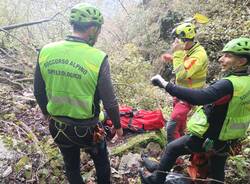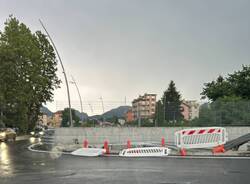Urban metamorphosis in Varese: Ferrovie Nord, more than a technological miracle
The 55th instalment of the column by Fausto Bonoldi shifts attention to the station of the “Ferrovie Nord”.
Each Monday, on a virtual walk, the column “Urban Metamorphosis” talks about the transformations that Varese has undergone in the last one hundred years, that is, since it became the Capital of the Province. The column is written by Fausto Bonoldi, a historic figure in Varese journalism who has covered this topic in the Facebook group La Varese Nascosta (“The Hidden Varese”) and who has also written a book, published by Macchione, entitled “Cara Varese come sei cambiata“ (“Dear Varese, how you’ve changed”).
Urban metamorphosis, 55th instalment: the Ferrovie Nord, more than a technological miracle
During the summer of 1885, after the construction of the first bridge, of iron, over the Olona River, after the Ferrovie Nord Milano had extended the rails of the Saronno-Malnate line to Varese, passengers were welcomed by a temporary station, which was actually a big wooden shed. Only later was the red-plastered building constructed, the recent restoration of which has made it even more striking.
The style is that of the Ferrovie Nord Milano’s stations of the day, which cannot be compared to the refined Art Nouveau architecture, but which does have a sober elegance.
The station in Varese, the second after the one built by private owners in 1865, which was subsequently handed over to the Italian State Railways, was initially the end of the line, but only one year later, it was extended as far as Laveno Mombello, a demonstration that the “miracle” of the rebuilding of the Genoa bridge was once the norm in public works. And “a miracle” was written about, on 8 August 1897, when 700 Milanese pilgrims on their way to Santa Caterina del Sasso survived a head-on collision between two trains on the iron bridge.
The slow speed prevented the convoy of pilgrims from falling from the bridge, and some passengers were injured, although not seriously. The occurrence was commemorated with an inscription on the small chapel, which was built immediately after the railway accident and decorated with frescoes by Riccardo Borghi, with an image of the Virgin Mary, which stands along the road from Folla to the cemetery in Malnate.
The iron bridge (which was built in Naples, and then disassembled and reassembled in the Olona Valley) became one of the symbols of Malnate, such that it is depicted in the municipal coat of arms. It remained functional until 1928, when it was replaced by the current concrete bridge, with its circular openings, on which building started in May 1927, and which was inaugurated on 5 May the following year.
Translated by Giada Colnago and Alessia Castagna
Reviewed by prof. Rolf Cook
La community di VareseNews
Loro ne fanno già parte
Ultimi commenti
Emanuele Zanetti su Motociclista di Ferno ucciso da un orso in Romania
GrandeFratello su Superate le 700 firme per la petizione sul recupero del Grand Hotel Campo dei Fiori di Varese
Felice su Motociclista di Ferno ucciso da un orso in Romania
Stefano64 su Neil Young torna dopo l'enorme successo di Harvest: ma non è il disco che tutti si aspettano
Alessandro Zanzi su Superate le 700 firme per la petizione sul recupero del Grand Hotel Campo dei Fiori di Varese
Felice su La bibliocabina, la panchina e il cane che fa pipì. A Fagnano Olona scoppia la polemica
















Accedi o registrati per commentare questo articolo.
L'email è richiesta ma non verrà mostrata ai visitatori. Il contenuto di questo commento esprime il pensiero dell'autore e non rappresenta la linea editoriale di VareseNews.it, che rimane autonoma e indipendente. I messaggi inclusi nei commenti non sono testi giornalistici, ma post inviati dai singoli lettori che possono essere automaticamente pubblicati senza filtro preventivo. I commenti che includano uno o più link a siti esterni verranno rimossi in automatico dal sistema.